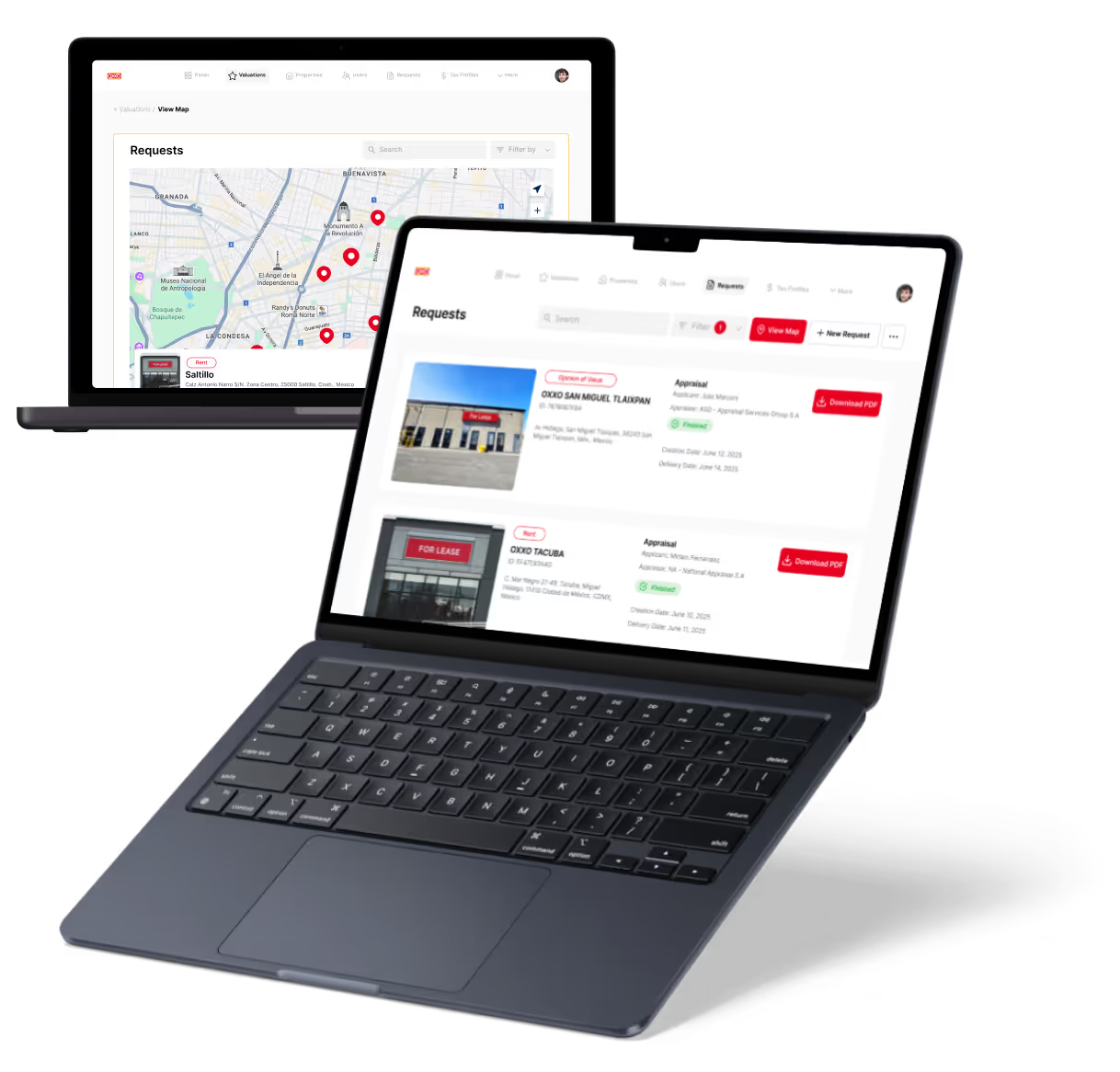Airtable vs Softr | 8 Factors to Decide the Best One
9 min
read
Compare Airtable vs Softr on design, access control, scalability, and use cases to choose the right tool for data management or app building
.avif)
As no-code tools rise in popularity, many teams ask: Should we use Airtable or Softr?
Over 450,000 companies use Airtable for everything from CRMs to product planning. Meanwhile, Softr has helped users build over 400,000 apps, turning Airtable data into full websites and client portals. Airtable is best for storing and organizing data, while Softr turns that data into apps with user access, design, and logic.
If you’re deciding between these two, or thinking of using both, this guide breaks down their key differences—so you can pick the right tool based on what you’re building.
Quick Comparison Table - Airtable vs Softr
1. What’s the core difference between Airtable vs Softr?
The core difference between Airtable and Softr lies in what each tool is made to do.
Airtable is a flexible database that looks like a spreadsheet but lets you organize and link different types of data. It’s great for managing tasks, storing records, and building workflows. You can use it for content calendars, CRMs, project tracking, and more.
Softr, on the other hand, helps you turn your Airtable data into fully functional web apps or websites without code. It connects directly to Airtable and lets you build portals, directories, and internal tools with user login, payments, and design elements.
So, Airtable is for storing and managing data, while Softr is for building apps using that data. If you need a backend, go with Airtable. If you want to turn that backend into a working app or site, choose Softr.
2. Design and customization
Let’s start with how each tool handles app design and visual customization.
What kind of UI design options does Airtable Interface offer?
Airtable’s Interface Designer lets you build simple dashboards, forms, and layouts using your Airtable data. You can choose from buttons, charts, lists, and record views to create internal tools or mini apps. However, the design options are limited—there’s no deep control over colors, fonts, or layout structure.
It's mostly made for internal use and works well for quick dashboards or team-facing tools. If you're building something for your team to interact with the data directly, it’s a helpful feature—but not a full web app builder.
How customizable is Softr for building front-end apps?
Softr is designed to turn your Airtable data into customer-facing apps or websites. You can fully customize pages with blocks, visuals, custom branding, and user flows. It supports buttons, cards, forms, login pages, and search filters—all using data from Airtable. You can also adjust colors, layout, visibility rules, and even add HTML blocks. While it’s not as flexible as coding from scratch, it’s powerful for building portals, CRMs, job boards, or membership sites. It gives non-tech users full control to design useful, beautiful apps from Airtable data.
Read more about:
3. Access control and permissions
Now let’s look at how each platform controls who can view or edit content.
How does Airtable handle user access and roles?
Airtable offers different permission levels—owner, creator, editor, commenter, and read-only. You can control who can access each workspace or base. However, access is set at the base level, not at the record or field level unless you're using Interface Designer with conditional visibility.
This works well for internal teams, but it’s not ideal for apps where each user should only see their own data. For public or user-specific access, Airtable alone won’t be enough—you’ll need to connect it to a front-end like Softr.
Can you manage user roles and visibility in Softr?
Yes, Softr has strong user access controls. You can set visibility rules for blocks, pages, and records based on user roles or logged-in status. For example, one user can see only their data while admins see everything. It supports user groups, membership plans, and custom sign-up/login flows.
You can even connect Softr to Airtable’s filtered views to show only relevant records. This makes Softr perfect for client portals, internal dashboards, or gated content apps where different users need different access levels—all without needing custom code.
4. Ease of use and learning curve
Let’s compare how beginner-friendly each tool is for new users.
Is Airtable beginner-friendly for data teams?
Yes, Airtable is very easy to learn for teams familiar with spreadsheets. It looks like Excel or Google Sheets but has features like linked records, rich field types, and multiple views (grid, Kanban, calendar). Building bases and views is intuitive, and most users can get started without training.
While Interface Designer adds more power, it takes some time to understand. Still, Airtable is a top choice for teams that want to organize data and create basic workflows without dealing with traditional databases or code.
Is Softr easy to use for non-technical users?
Absolutely. Softr is one of the easiest tools for building web apps without coding. It uses drag-and-drop blocks, templates, and simple settings to connect to Airtable and design apps quickly. There’s no need to write code or manage servers. Most users can create a working app in hours.
Softr also offers beginner-friendly guides, templates, and a clean interface. It’s built specifically for creators, startups, and small businesses who want to launch apps or portals fast, even with zero tech background.
Read more about:
5. Integrations and backend compatibility
Now let’s see how well each tool connects with other platforms and services.
Which integrations does Airtable support natively?
Airtable has native integrations with tools like Slack, Gmail, Google Calendar, and Outlook. You can also use its Automations feature to create basic workflows like sending emails or updating records. For more advanced setups, Airtable works with Zapier, Make, and has an open API for custom connections.
You can also sync data from Google Sheets or external sources using Airtable Sync. While the integrations are powerful, Airtable still works best when it’s the backend, not the front-facing app.
What backends and tools can you connect to Softr?
Softr is built around Airtable as the primary backend, but it also supports Google Sheets (in beta), REST APIs, and coming support for SmartSuite. You can connect forms, search bars, filters, and buttons directly to your Airtable data.
It also works with Stripe for payments, Outseta for memberships, Google Analytics, and Zapier for automation. While it's not yet as flexible as custom-built apps, it covers most common use cases for no-code startups, membership portals, and internal tools.
Read more about:
6. Scalability and performance
Let’s compare how each platform handles growing teams and larger projects.
Is Airtable scalable for large projects?
Airtable scales well for small to mid-sized teams, but it has limitations. Each base has a row limit (up to 100,000 with higher plans), and performance may slow with large data sets or complex automations. For internal tools, CRM databases, or project trackers, it works well.
But for enterprise-level apps or multi-user dashboards, Airtable alone isn’t enough. That’s why many teams use Airtable as a backend and connect it to tools like Softr or Glide to create a scalable front end with user access control.
How scalable is Softr based on its backend options?
Softr scales well for typical no-code projects like portals, directories, and client dashboards. However, since it relies mostly on Airtable as the backend, its scalability is tied to Airtable’s limits. It works great for up to a few thousand records, depending on your app setup.
Softr does provide caching, load balancing, and optimized data fetching for better performance. If your use case grows, you might need to consider alternatives like Xano or move to custom code—but for most small businesses and startups, it scales just fine.
7. Product maturity and flexibility
Here’s how each platform handles long-term growth and changing app needs.
Is Airtable Interface Designer ready for full app building?
Airtable Interface Designer is great for internal dashboards and simple data tools. You can build forms, views, and workflows to help teams work better. However, it lacks advanced features like user authentication, role-based access, or real app deployment.
It’s not meant for customer-facing apps or websites. As of now, it’s a flexible tool for making data more accessible, but it’s not a full no-code app builder. It works best when paired with tools like Softr to bring data to life through a usable front end.
How flexible is Softr for long-term app projects?
Softr is surprisingly flexible for a no-code tool. You can launch client portals, marketplaces, internal tools, and more with responsive design, login systems, and conditional visibility. It supports custom domains, Stripe payments, and user management.
However, it may feel limiting for very complex use cases like multi-step workflows or custom database logic. That said, for long-term use in startups, agencies, or client work, Softr is a reliable choice. And as the platform evolves, it keeps adding features that make it even more suitable for business apps.
Read more about:
8. Final verdict – Airtable or Softr?
Let’s close with a clear summary of when to choose each tool based on your project needs.
When to choose Airtable over Softr
Choose Airtable if your main goal is to organize, store, and collaborate on data. It’s perfect for building internal tools, managing workflows, and centralizing tasks across your team. Use it when your team already uses spreadsheets and you want to level up without a steep learning curve. If you don’t need a full app, Airtable is enough.
When to choose Softr over Airtable
Choose Softr when you want to turn your Airtable data into a working app or website. It’s great for client portals, job boards, directories, and member-only sites. Use it if you need user login, design control, or public access. Softr makes it possible to go from data to app—without writing a single line of code.
Created on
July 2, 2025
. Last updated on
December 11, 2025
.

FAQs
Can I use Airtable and Softr together?
Is Softr better for building public apps than Airtable?
Does Airtable support user authentication like Softr?
Which is easier to learn: Airtable or Softr?
Can I build a full app with just Airtable?
Is Softr limited by Airtable’s features?







%20(Custom).avif)








.avif)